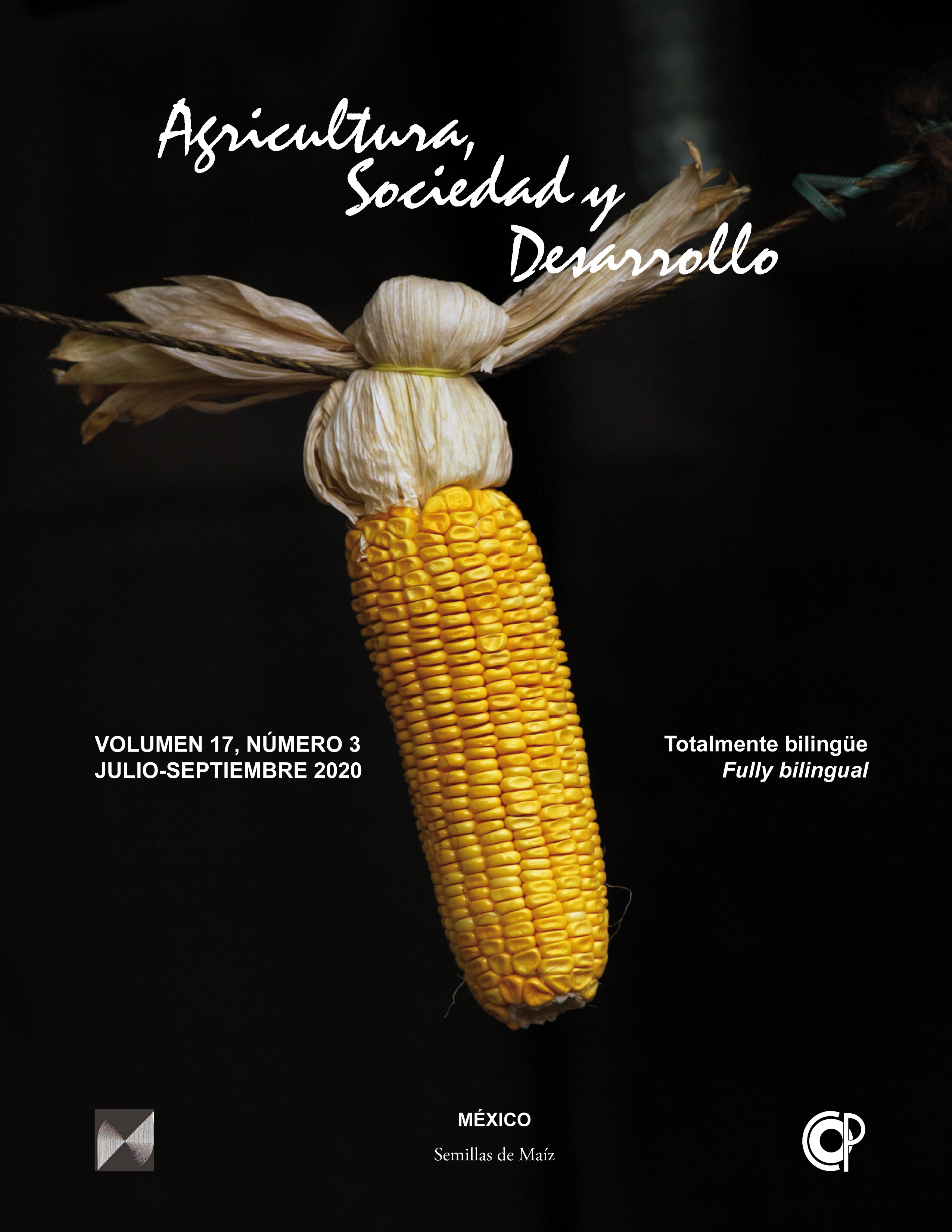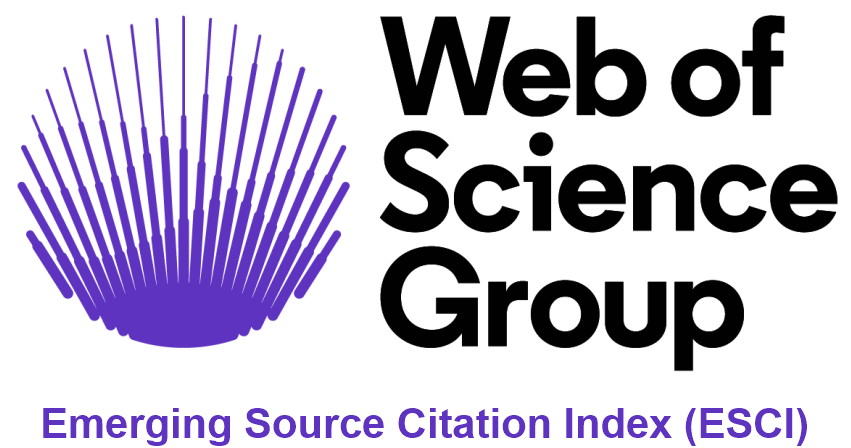Society-landscape interaction: elements for ecosystem management in Sierra Fría, Aguascalientes, Mexico
DOI:
https://doi.org/10.22231/asyd.v17i3.1364Keywords:
Aguascalientes; Mexico; socio-ecosystems; Sierra FríaAbstract
The relationships between society and natural ecosystems are complex and it is necessary to understand them in order to undertake actions that contribute to sustainable management. With the objective of evaluating the influence of some anthropogenic activities on the ecosystems that make up the Sierra Fría Protected Natural Area, 20 interviews were conducted, 10 of them directed at owners and 10 at ranch managers. The interview format included the past, present and future times, to analyze the activities and phenomena that have caused alterations in the landscape. Radial analyses were carried out to observe the main threats and detect the most frequently used biotic resources. The results show that the strongest disturbances decreased in the decades of the 1970s and 1990s. Currently, dead firewood extraction, wildlife hunting and forest sanitation are the most important management activities, while the main threats are habitat fragmentation and wild fauna extinction. The most frequently used biotic resources are wild fauna and live oaks (Quercus spp.), madrones (Arbutus spp.) and junipers (Juniperus spp.), as timber-yielding resources. The results obtained will serve to design management strategies with a socio-ecosystem vision in Sierra Fría, Aguascalientes.
References
Ayres, M. P., and M. J. Lombardero. 2000. Assessing the consequences of global change for forest disturbance from herbivores and pathogens. The Science of the Total Environment 262: 263-286.
Binkley, D., y S. Duncan. 2009. The past and future of Colorado’s forest: connecting people and ecology. Ecology and Society 14(2): 9. Consultada 28 en. 2014. Disponible en: http://www.ecologyandsociety.org/vol14/iss2/art9/.
Borman, M.M. 2005. Forest stand dynamics and livestock grazing in historical context. Conservation Biology 19: 1658-1662.
Bormann, B.T., Haynes R.W., y J. R. Martin. 2007. Adaptative management of forest ecosystems: did some rubber hit the road? Bioscience 57: 186-191.
Calderón-Aguilera, L. E., Rivera-Monroy V. H., Porter-Bolland L., Martínez-Yrízar A., Ladah L.B., Martínez-Ramos M. et al. 2012. An assessment and natural and human disturbance effects of Mexican Ecosystem: current trends and research gaps. Biodiversity and Conservation 21: 589-617.
Castillo, A., Magaña A., Pujadas A., Martínez L., y C. Godínez. 2005. Understanding the interaction of rural people with ecosystems: a case study in tropical dry forests of Mexico. Ecosystems 8: 630-643.
Chapa-Bezanilla, D., Sosa-Ramírez J., y A. de Alba-Ãvila. 2008. Estudio multitemporal de fragmentación de los bosques en la Sierra Fría, Aguascalientes, México. Madera y Bosques 14: 37-51.
Christensen, N.L., Bartuska A.M., Brown J.H., Carpenter S., D’Antonio C., Francis R., Franklin J.R., MacMahon J.A., Noss R.F., Parsons D.J., Turnes M.G., y M.G. Woodmansee. 1996. The repot of the Ecological Society of America committee on the scientific basis for the ecosystem management. Ecological Applications 6: 665-691.
Díaz, V. 2012. Ecología y manejo de paisajes forestales en la Sierra Fría, Aguascalientes, México. Tesis doctoral. Aguascalientes, México. Universidad Autónoma de Aguascalientes. 220 p.
Díaz, V., Sosa-Ramírez J., y D.R. Pérez-Salicrup. 2012. Distribución y abundancia de las especies arbóreas y arbustivas en la Sierra Fría, Aguascalientes, México. Polibotánica 34: 99-126.
Díaz-Núñez, V., J. Sosa-Ramírez, y D. R. Pérez-Salicrup. 2016. Vegetation patch dynamics and tree diversity in a conifer and oak forest in central Mexico. Botanical Science 94 (2) 1-12.
Folch i G.R. 2011. Socioecología versus sostenibilidad. Cuaderno interdisciplinar de desarrollo sostenible. 6: 139-164.
Gobierno del Estado de Aguascalientes. 1994. Declaratoria del Ãrea Natural protegida Sierra Fría, Aguascalientes, Diario Oficial Ags. Tomo LVII, No. 5. Órgano del Gobierno Constitucional del Estado. Aguascalientes, México. Consultada 27 en. 2014. Disponible en: http://www.aguascalientes.gob.mx/imae/recursosbioticos/danpsf.aspx
Jardel-Peláez, E.J., A.L. Santiago-Pérez, Cortez-Montaño C., y F. Castillo-Navarro. 2004. Sucesión y dinámica de rodales (Capítulo 5). In: Cuevas-Guzmán R, Jardel-Peláez EJ (eds) Flora y vegetación de la estación científica “Las Joyasâ€. Petra ediciones. pp: 179-203.
Lynam, T., de Jong W., Sheil D., Kusumanto T., y Evans K. 2007. A review of tools for incorporating community knowledge, preference and values into decision making in natural resources management. Ecology and Society 12(1): 5. Consultada 02 feb. 2014. Disponible en: http://www.ecologyandsociety.org/vol12/issl/art5.
McCool, S.F., y L.E. Kruger. 2003. Human migration and natural resources: implications for land managers and challenges for researchers. Gen. Tech. Rep.
PNW-GTR-580. Portland, Or. EE.UU. Department of Agriculture, Forest Service, Pacific Northwest Research Station. 26 p.
McPherson, G. R. 1997. Ecology and management of North American Savannas. Arizona, EE.UU. The University of Arizona Press. 208 p.
Mendoza, M.E., López-Granados E., Geneletti D., Pérez-Salicrup D.R., y V. Salinas. 2011. Analyzing land cover and land use processes at watershed level: a multitemporal study in the Lake Cuitzeo watershed, Mexico (1975-2003). Applied Geography 31: 237-250.
Millennium Ecosystem Assessment. 2005. Ecosystem and human well-being: synthesis. Washington, D.C. EE.UU. Island Press. 155 p.
Minnich, R.A., Sosa-Ramírez J., Franco V.E., Barry W.J., y M.E. Siqueiros. 1994. Reconocimiento preliminar de la vegetación y de los impactos de las actividades humanas en la Sierra Fría, Aguascalientes. Investigación y Ciencia 12: 23-29.
Moreno-Rico, O., Velázquez-Valle R., Sánchez-Martínez G., Siquéiros-Delgado, M.E., Dela Cerda-Lemus M., y R. Díaz-Moreno. 2010. Diagnóstico fitopatológico de las principales enfermedades en diversas especies de encinos y su distribución en la Sierra Fría de Aguascalientes, México. Polibotánica 29: 165-189.
Navarrete, J.L., Ramírez M.I., y D.R. Pérez-Salicrup. 2011. Logging with protected areas: spatial evaluation of the monarch butterfly biosphere reserve Mexico. Forest Ecology and Management 262: 646-654.
Oliver, C.O., y B.C. Larson. 1996. Forest Stand Dynamics. New York, EE.UU. John Wiley and Sons. Update edition. 544 p.
Parés-Ramos, I.K., Gould, W.A., y T.M. Aide TM. 2008. Agricultural abandonement, suburban growth and forest expansion in Puerto Rico between 1991 and 2000. Ecology and Society 13(2): 8. Consultada 02 Feb. 2014. Disponible en: http://www.ecologyandsociety.org/vol13/iss2/art1/.
Pérez-Salicrup, D.R. 2004. La restauración en relación con el uso extractivo de recursos bióticos. In: Sánchez Ó, Márquez R, Peters E. (eds) Restauración ecológica. México, DF. Instituto Nacional de Ecología –SEMARNAT-, U. S. Fish & Wildlife Service, Unidos para la conservación, A C. p: 125-145.
Pickett, S.T.A., y P.S. White (eds). 1985. The Ecology of Natural Disturbance and Patch Dynamics. Orlando, Florida. EE. UU. Academic Press. 472 p.
Romo-Díaz, B., Velásquez-Valle R., Siquéiros-Delgado M.E., Sánchez-Martínez G., de la Cerda-Lemus M., Moreno-Rico O., y E. Pérez-Molphe Balch. 2007.
Organismos con efecto potencial en el declinamiento de encinos de la Sierra Fría, Aguascalientes, México. Investigación y Ciencia 39: 11-19.
Secretaría del Medio Ambiente y Recursos Naturales. 2009. Fomento para la conservación y al aprovechamiento sustentable de la vida silvestre. Consultado 14 sept. 2011. Disponible en http://www.semarnat.gob.mx/leyes-y-normas/leyes-federales
Shrowalter, T., Hansen, E., Molina, R., y Y. Zhang. 1999. Integrating the ecological roles of phytophagous insects, plant pathogens, and mycorrhizae in managed forests. In Kohm KA, J F Franklin eds. Creating a forestry for the 21st century. p. 171-190.
Sosa-Ramírez, J. 1998. Agua y sustentabilidad en Aguascalientes. Tres ensayos. Aguascalientes, México. CIEMA. 121 p.
Torrealba I,F, Carbonell. 2008. La conservación integral alternativa desde el Sur.: una visión diferente de la conservación. Revista de la Universidad Bolivariana. 21: 339-363.
Downloads
Published
How to Cite
Issue
Section
License
Authors who publish in this journal accept the following conditions:
- The authors retain the copyright and transfer to the magazine the right of the first publication, with the work registered with the Creative Commons attribution license, which allows third parties to use what is published as long as they mention the authorship of the work and the first publication in this magazine.
- Authors may make other independent and additional contractual arrangements for non-exclusive distribution of the version of the article published in this journal (e.g., including it in an institutional repository or publishing it in a book) as long as they clearly indicate that the work It was first published in this magazine.
- Authors are permitted and encouraged to publish their work on the Internet (for example on institutional or personal pages) before and during the review and publication process, as it can lead to productive exchanges and greater and faster dissemination of the work. published (see The Effect of Open Access).













